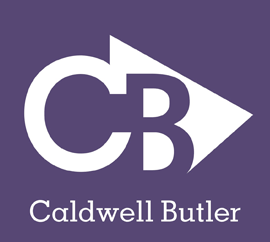
Lean and Six Sigma have been strongly associated with cost cutting, but few leaders associate Lean-Six Sigma with market growth. A deeper examination of waste reveals that market share and revenue can be greatly enhanced by eliminating waste such as missed appointments, waiting times, delays in procedures, and other events that suboptimize care delivery. CBA recommends the following process for organizations who want to increase their market share.
CBA has found that building a Sphere of Influence Map can be an excellent first step in identifying the problems in current admission and patient access processes that cause volume leakage. The purpose of this exercise includes:
CBA recommends that SIPOC teams be provided with a macro map that provides managers with a starting framework for identifying where patient/procedure volume originates within the hospital's defined service area. The goal is not to complete the map but to provide an initial framework that optimizes the manager's time during the 100-Day Workout Kick Off. It is critical that process owners (managers) involved are able to contribute the details and have input into the mapping process. The ultimate goal is to have process owners own the map. Once completed, the map shall identify:
CBA also recommends that an objective assessment of the hospital's marketing, public relations systems, and physician relations efforts be conducted. Typically an assessment consist of personal interviews with hospital staff and other key stakeholder in the community. The assessment shall include:
A. Data Summit – This process collects the information necessary to analyze any metrics that are present. Examples include:
B. Growth Initiative Readiness Assessment – The assessment should utilize structured one-on-one interviews to examine service lines. Areas of focus should include interviews with each of the service line leaders to examine patient access, capacity, procedural readiness, leadership champions, physician support, the business strategy behind the service line, as well as operational excellence and marketing outreach.
C. Physician Assessment – This survey instrument consists of structured interviews starting with the CMO, COO, and other employees who work in physician relations. The assessment analyzes the referring primary base of physicians, the hospitalists, specialists, and any owned (employed) physicians who admit to or practice at the hospital. This also examines the activities or processes with opportunities to improve physicians support, increase the ease of admission, capacity and outreach efforts by the hospital to guide patients to their practices.
D. Marketing, Public Relations, Community Relationships, and Promotions Assessment – This assessment examines the activities of the outreach departments of the hospital. The review includes how campaigns for service lines are selected, promoted, and the return on that investment. It will review if and/or how community information is gathered and analyzed, what transactional tactics are used to drive selected market share, and review of the vehicles used: web, advertising, public relations, and community relations. Extra emphasis will be placed on the relationships with area employers for insured patients.
Complete Development of Detailed Sphere of Influence Map
At the Kick-Off of the 100-Day Workout, team leaders shall be presented with the preliminary Sphere of Influence Map.
Team Assignments
CBA recommends organizing the staff into 3-5 sub teams. Each team will be comprised of individuals related to a specific market segment where the participant has a role in influencing growth and volume. The job function of some individuals will mean that they are members of multiple teams. Each team shall have a designated leader to guide the team through an in-depth discussion of their respective market segment. CBA recommends providing the team a series of critical prompting questions designed to aid the team in the development of actionable steps that will increase market share.
The completion of the Sphere of Influence Map exercise is designed to take approximately two hours for each team to complete. At the end of this exercise, each team shall have achieved consensus on:
Examples of actionable items for growth strategies
100-Day Action Plans
Each manager needs to be responsible for creating individual team 100-Day Action Plans in support of their team. CBA uses EXCELerator to track progress and results. CBA recommends that hospital leadership establish the expectation that each manager complete:
CBA recommends that accountability for implementation of improvements be maintained through the use of the 100-Day Workout.
CBA shall support managers in the implementation and rapid cycle testing of their strategies. CBA staff shall work with finance to track the budget implications of the total changes.
CBA recommends that implementation be tracked in a system like EXCELerator®. In addition, senior leaders should appoint a Finance Liaison to track the financial impact of changes implemented and track growth in volume.
CBA recommends that all changes be hardwired into the work processes using one of the 84 change concepts. This will ensure that gains are sustainable and that sound process redesign and control processes are in place to hold the gains.